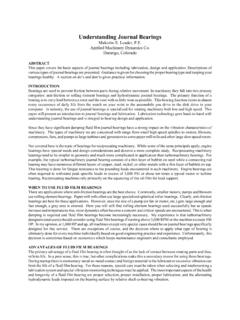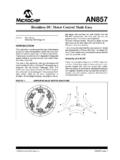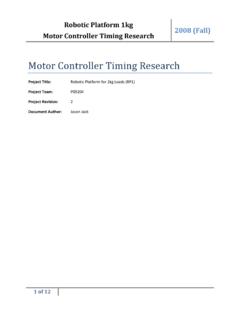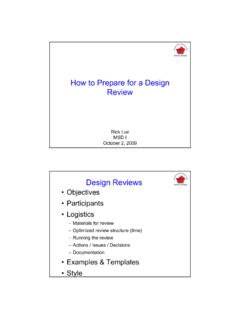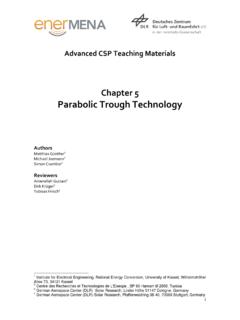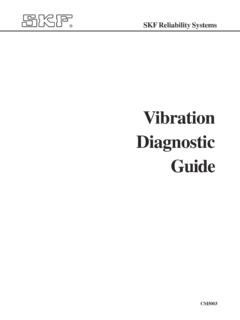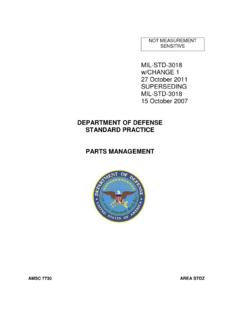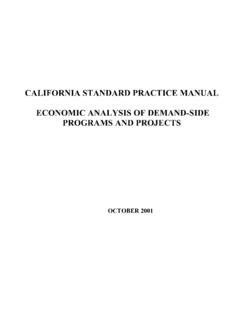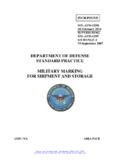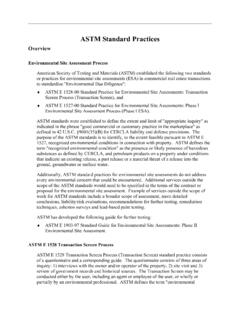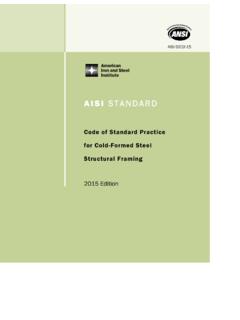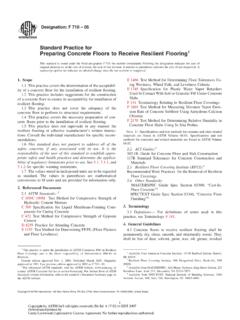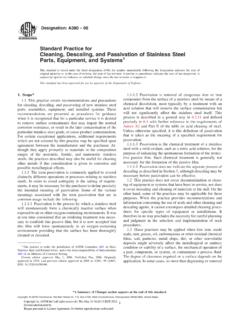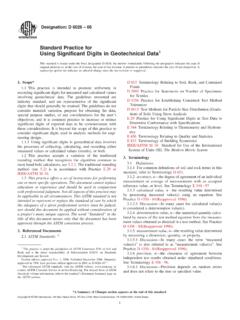Transcription of Standard Practice for Safe Walking Surfaces1 - EDGE
1 Designation: F1637 13An American National StandardStandard Practice forSafe Walking Surfaces1 This Standard is issued under the fixed designation F1637; the number immediately following the designation indicates the year oforiginal adoption or, in the case of revision, the year of last revision. A number in parentheses indicates the year of last reapproval. Asuperscript epsilon ( ) indicates an editorial change since the last revision or This Practice covers design and construction guidelinesand minimum maintenance criteria for new and existingbuildings and structures. This Practice is intended to providereasonably safe Walking surfaces for pedestrians wearingordinary footwear. These guidelines may not be adequate forthose with certain mobility Conformance with this Practice will not alleviate allhazards; however, conformance will reduce certain The values stated in inch-pound units are to be regardedas Standard .
2 The values given in parentheses are mathematicalconversions to SI units that are provided for information onlyand are not considered Standard does not purport to address all of thesafety concerns, if any, associated with its use. It is theresponsibility of the user of this Standard to establish appro-priate safety and health practices and determine the applica-bility of regulatory limitations prior to Referenced standards :2F1646 Terminology Relating to Safety and Traction forFootwear3. See TerminologyF1646for the following terms used inthis Bollard, Carpet, Cross slope, Element, Fair, Footwear, Foreseeable pedestrian path, Planar, Ramp, Sidewalk, Slip resistance, Slip resistant, Walkway surface hardware, and4. Significance and This Practice addresses elements along and in walkwaysincluding floors and walkway surfaces, sidewalks, short flightstairs, gratings, wheel stops, and speed bumps.
3 Swimmingpools, bath tubs, showers, natural walks, and unimproved pathsare beyond the scope of this Walkway Walkways shall be stable, planar, flush, and even tothe extent possible. Where walkways cannot be made flush andeven, they shall conform to the requirements Walkway surfaces for pedestrians shall be capable ofsafely sustaining intended Walkway surfaces shall be slip resistant under ex-pected environmental conditions and use. Painted walkwaysshall contain an abrasive additive, cross cut grooving, texturingor other appropriate means to render the surface slip resistantwhere wet conditions may be reasonably Interior walkways that are not slip resistant when wetshall be maintained dry during periods of pedestrian Changes in Adjoining walkway surfaces shall be made flush andfair, whenever possible and for new construction and existingfacilities to the extent Changes in levels up to1 4in.
4 (6 mm) may be verticaland without edge treatment. (SeeFig. 1.) Changes in levels between1 4and1 2in. (6 and 12 mm)shall be beveled with a slope no greater than 1:2 (rise:run). Changes in levels greater than1 2in. (12 mm) shall betransitioned by means of a ramp or stairway that complies withapplicable building codes, regulations, standards , orordinances, or all of Practice is under the jurisdiction of ASTM CommitteeF13on Pedestrian/Walkway Safety and Footwear and is the direct responsibility of Walkway edition approved Aug. 1, 2013. Published August 2013. Originallyapproved in 1995. Last previous edition approved in 2010 as F1637 10. referenced ASTM standards , visit the ASTM website, , orcontact ASTM Customer Service at ForAnnual Book of ASTMS tandardsvolume information, refer to the Standard s Document Summary page onthe ASTM ASTM International, 100 Barr Harbor Drive, PO Box C700, West Conshohocken, PA 19428-2959.
5 United States1 Copyright by ASTM Int'l (all rights reserved); Mon Sep 9 14:32:47 EDT 2013 Downloaded/printed byRochester Institute Of Technology pursuant to License Agreement. No further reproductions Carpet shall be maintained so as not to create pedes-trian hazard. Carpet shall be firmly secured and seams tightlymaintained. Carpet shall not have loose or frayed edges,unsecured seams, worn areas, holes, wrinkles or other hazardsthat may cause trip Carpet on floor surfaces shall be routinely restretching may become necessary. Periodic inspec-tion is particularly important at step nosing Carpet and carpet trim (as measured when com-pressed) shall meet the transition requirements Shag-type carpet shall not be used on stair should be firmly secured onto the tread and aroundthe and Mats, runners, or other means of ensuring that build-ing entrances and interior walkways are kept dry shall beprovided, as needed, during inclement weather.
6 Replacementof mats or runners may be necessary when they Building entrances shall be provided with mats orrunners, or other means to help remove foreign particles andother contaminants from the bottom of pedestrian should be provided to minimize foreign particles, thatmay become dangerous to pedestrians particularly on hardsmooth floors, from being tracked on Mats or runners should be provided at other wet orcontaminated locations, particularly at known transitions fromdry locations. Mats at building entrances also may be used tocontrol the spread of precipitation onto floor surfaces, reducingthe likelihood of the floors becoming Mats shall be of sufficient design, area, and placementto control tracking of contaminants into buildings. safe prac-tice requires that mats be installed and maintained to avoidtracking water off the last mat onto floor Mats, runners, and area rugs shall be provided withsafe transition from adjacent surfaces and shall be fixed inplace or provided with slip resistant Mats, runners, and area rugs shall be maintained so asnot to create pedestrian hazards.
7 Mats, runners, and area rugsshall not have loose or frayed edges, worn areas, holes,wrinkles, or other hazards that may cause trip Minimum walkway illumination shall be governed bythe requirements of local codes and ordinances or, in theirabsence, by the recommendations set forth by the IlluminatingEngineering Society of North America (IES) (Application andReference Volumes). Illumination shall be designed to be glare Illumination shall be designed to avoid casting ofobscuring shadows on walkways, including shadows on stairsthat may be cast by Interior and exterior pedestrian use areas, includingparking lots, shall be properly illuminated during periods whenpedestrians may be A minimum headroom clearance of 6 ft 8in. ( m), measured from the walkway surface, shall beprovided above all parts of the walkway. Where such clearanceis not provided in existing structures, the low clearanceportions of the walkway shall be safely padded, marked withsafety contrast color coding and posted with appropriatewarning Exterior walkways shall be maintained so as to pro-vide safe Walking Exterior walkways shall be slip Exterior walkway conditions that may be consideredsubstandard and in need of repair include conditions in whichthe pavement is broken, depressed, raised, undermined,slippery, uneven.
8 Or cracked to the extent that pieces may bereadily Exterior walkways shall be repaired or replaced wherethere is an abrupt variation in elevation between displacements in exterior walkways shall be transi-tioned in accordance Edges of sidewalk joints shall be Walking Surface Walking surface hardware within foreseeable pedestrianpaths shall be maintained flush with the surrounding surfaces;variances between levels shall be transitioned in Walking surface hardware within foreseeable pedestrianpaths shall be maintained slip Walking surface hardware shall be installed and main-tained so as to be stable under reasonable foreseeable Stairways with distracting forward or side viewsshall be avoided. A distracting view is one which can attractthe stair user s attention, (for example, advertisements, storedisplays), thus distracting the stair Step nosings shall be readily discernible, slip resistant,and adequately demarcated.
9 Random, pictorial, floral, or geo-metric designs are examples of design elements that cancamouflage a step Doors shall not open over Structure (reserved). Flight Stairs (Three or Fewer Risers) Short flight stairs shall be avoided where In situations where a short flight stair or single steptransition exists or cannot be avoided, obvious visual cues shallbe provided to facilitate improved step , delineated nosing edges, tactile cues, warning signs,contrast in surface colors, and accent lighting are examples ofsome appropriate warning 1 Changes in Levels up to a Maximum of1 4in.(6mm)F1637 132 Copyright by ASTM Int'l (all rights reserved); Mon Sep 9 14:32:47 EDT 2013 Downloaded/printed byRochester Institute Of Technology pursuant to License Agreement. No further reproductions Speed Design to avoid the use of speed All speed bumps which are in foreseeable pedestrianpaths shall comply (walkway changes in level).
10 Existing speed bumps, that do not conform , shallbe clearly marked with safety color coding to contrast withsurroundings. Painted speed bumps shall be slip are Wheel Parking lots should be designed to avoid the use ofwheel Wheel stops shall not be placed in pedestrian walkwaysor foreseeable pedestrian Wheel stops shall be in contrast with their Wheel stops shall be no longer than 6 ft ( m) andshall be placed in the center of parking stalls. The minimumwidth of pedestrian passage between wheel stops shall be 3 ft( m). The top of wheel stops shall not exceed in. (165 mm)in height above the parking lot Adequate illumination shall be maintained at wheelstops as governed by the requirements of local codes andordinances or, in their absence, by the recommendations setforth by the Illuminating Engineering Society of NorthAmerica (IES-Application and Reference Volumes).

